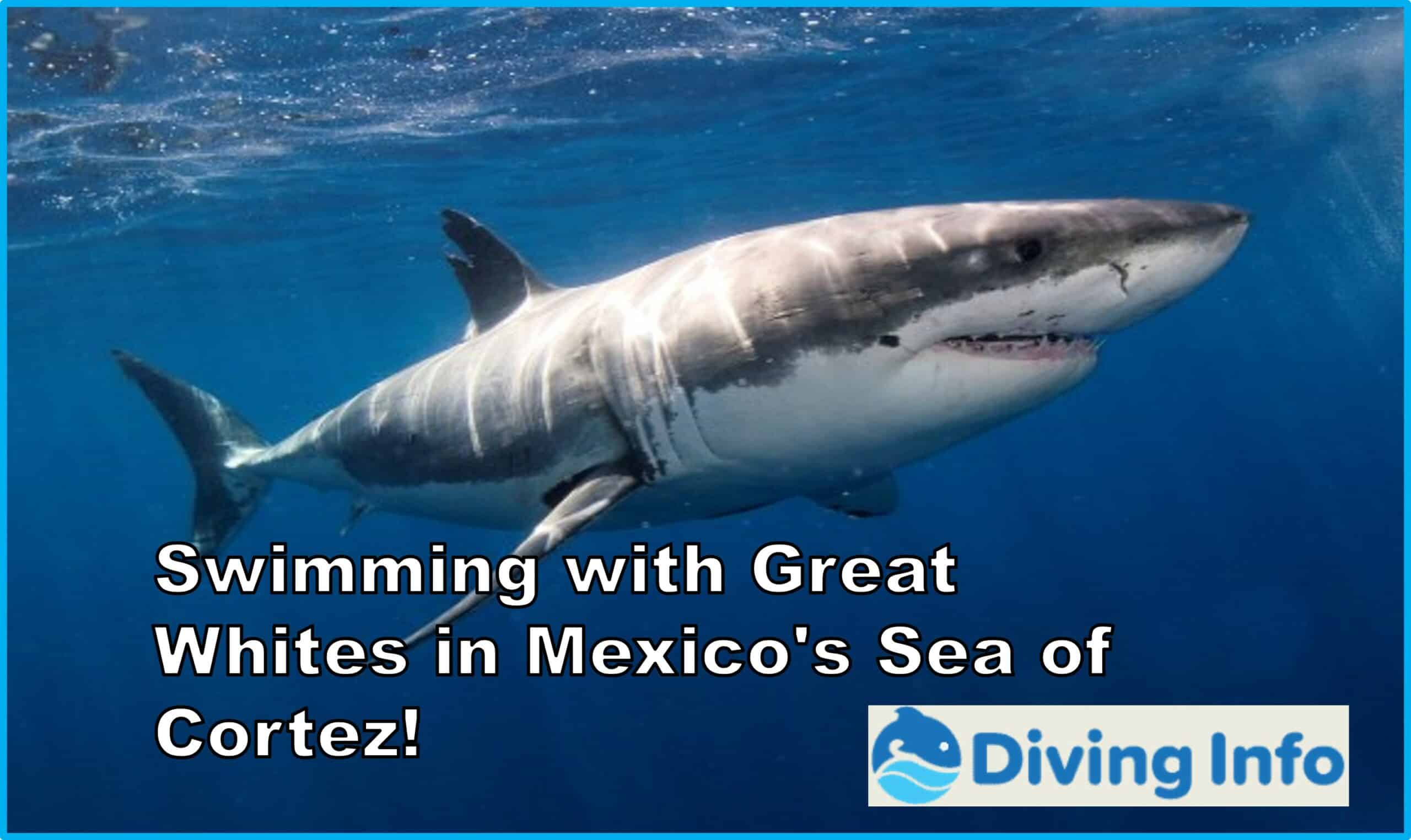*This post may contain affiliate links. As an Amazon Associate we earn from qualifying purchases.
Are you ready to take your underwater adventures to the next level? If so, why not consider swimming with great white sharks in Mexico’s Sea of Cortez?
This stunning location, situated off the coast of the Baja Peninsula, is one of the best places in the world to dive with these magnificent creatures. Not only is the Sea of Cortez a pupping ground for great whites, but its waters boast temperatures ranging from 19-24°C (66-75°F), making it the perfect environment for these apex predators.
Imagine the rush of adrenaline as you come face to face with a great white, observing its powerful movements and sharp teeth. But don’t worry, with the right guidance and safety precautions, swimming with great whites can be a safe and unforgettable experience.
So why not take the plunge and embark on an adventure of a lifetime?
You may be interested in my other articles about Are there great white sharks in the Red Sea or Great white shark attack Mediterranean.
Location and Habitat
If you’re interested in swimming with great white sharks, head to Guadalupe Island off the coast of Mexico’s Baja Peninsula, where these sharks use the Sea of Cortez as a pupping ground.
Sightings frequency of these sharks in the Sea of Cortez is rare, but it’s possible to observe them during their migration season. Get in-depth knowledge about shark habitats.
The water temperature in this region ranges from 19-24°C (66-75°F), which is perfect for the great whites to thrive in. Despite their fearsome reputation, great white sharks are an essential part of the ocean’s ecosystem, and conservation efforts are in place to protect them.
In Mexico, Guadalupe Island has been designated as a Biosphere Reserve to protect the great white sharks and their habitat. Visitors must adhere to strict guidelines when swimming with these sharks, such as staying inside a protective cage and not touching or disturbing them.
These measures ensure the safety of both the sharks and the people who come to witness their beauty and power.
Diving with Great Whites
You can experience cage diving with these magnificent creatures at Guadalupe Island off the coast of the Baja Peninsula. This island is one of the best places in the world to observe great white sharks up close. Many dive liveaboards, such as MV Nautilus Explorer, MV Nautilus Under Sea, and MV Solmar V, offer trips to Guadalupe Island for cage diving.
Why shark cage diving is an unforgettable experience.
During a cage diving experience, you will be lowered into the water in a protective cage while great white sharks swim around you. It is an exciting and unique opportunity to witness these creatures in their natural habitat. Here is a table detailing some key information about cage diving with great white sharks at Guadalupe Island:
| Factor | Detail |
| Best Time to Visit | August – October |
| Water Temperature | 19-24°C (66-75°F) |
| Cage Diving Companies | MV Nautilus Explorer, MV Nautilus Under Sea, MV Solmar V |
Cage diving with great white sharks at Guadalupe Island is a popular and unforgettable experience for many divers. It allows you to witness these incredible creatures up close while remaining safe inside a protective cage.
Facts and Information
Explore some interesting facts and information about the elusive great white sharks found in the Sea of Cortez. These apex predators are known for their size, power, and sharp teeth.
Despite their reputation as fierce hunters, they’re also fascinating creatures with unique behaviors. For example, great whites are known to breach the water’s surface while hunting, using their powerful tails to propel themselves into the air. This behavior is typically seen during the annual seal migration at Guadalupe Island, where the sharks gather to feed.
Shark conservation efforts are important to ensure the survival of these majestic creatures. Great white sharks are currently listed as vulnerable by the IUCN Red List due to overfishing and habitat loss. To protect them, regulations have been put in place to limit shark fishing and protect their habitats.
Additionally, researchers are studying their behavior and migration patterns to better understand their needs and how to protect them. By supporting shark conservation efforts, we can help ensure that these fascinating creatures continue to thrive in our oceans.


